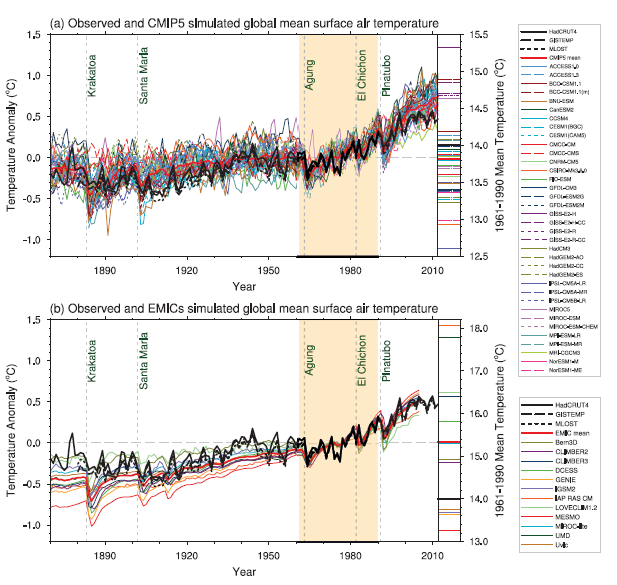The Two Layers Model with Feedback presented in the former chapter is a static energy balance model that does not take into account the air and heat transport taking place from the tropical zones towards the poles, as well as their vertical components. So called General Circulation Models (GCM) have been developed to simulate such flows and to investigate local differences. In the preceding chapter, some parametric values, as for example from feedback mechanisms, were derived from such models because of the impossibility to design and perform any realistic experiment.
With GCMs it may be possible to reveal zonal difference in the sensitivity to global warming. Hence it may be argued that temperate climate zones in the 30-70 degree latitude may get higher temperature variability than in the tropical zones where water’s dampening effect prevails. But such assertions depend on model quality; there is no way to know if an invalid model leads to correct or incorrect conclusions.
Model validation can only be made in retrospect (hindcast) or by waiting long enough to compare forecasts with reality. In its latest 5th assessment report the IPCC presents a compilation of available model results.

Model comparison, actual temperature anomalies are given by the black curve. IPCC AR5 WG1 fig 9.8.
The upper part (a) reflects Coupled Model Intercomparison Project Phase 5
The lower part (b) concerns Earth System Models of Intermediate Complexity, but the comparison stops in 2006.
|
When zooming on the upper right corner of this comparison diagram, it can be seen that, with exception of one model, all simulations overestimate the temperature anomaly, by up to 0.6 °C. And on the lower part of the diagram the temperature at the end of the 19th century is clearly underestimated. Thus these models seem just to work within the reference range of the temperature anomalies that lies between 1961 and 1990. |
|
Citing IPCC comments on these discrepancies: “This difference between simulated and observed trends could be caused by some combination of (a) internal climate variability, (b) missing or incorrect radiative forcing and (c) model response error.” (WG5 AR1, page 769)
Having taken that precaution, it is highly questionable that IPCC still uses such invalid models to build its anthropogenic catastrophic warming scenarios. Only prophecies can be uttered with such in silico fictions.
This is the costly result of zillions of computational efforts. Apparently, analysing for multivariate correlations with a simple desktop PC, as I did with quite significant results, is not a fancy enough technique for climate experts.



